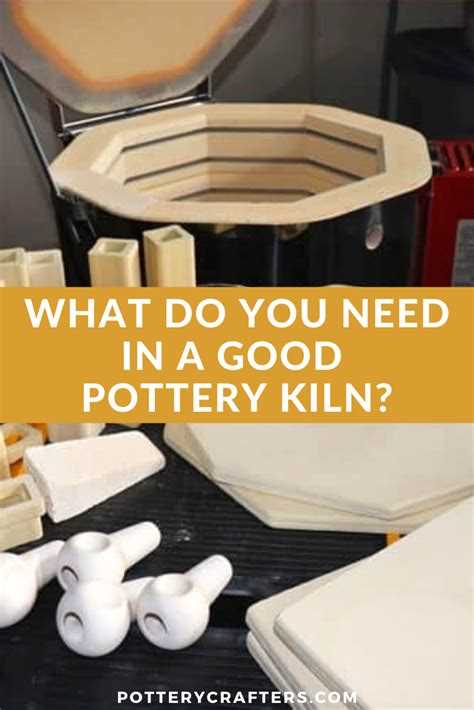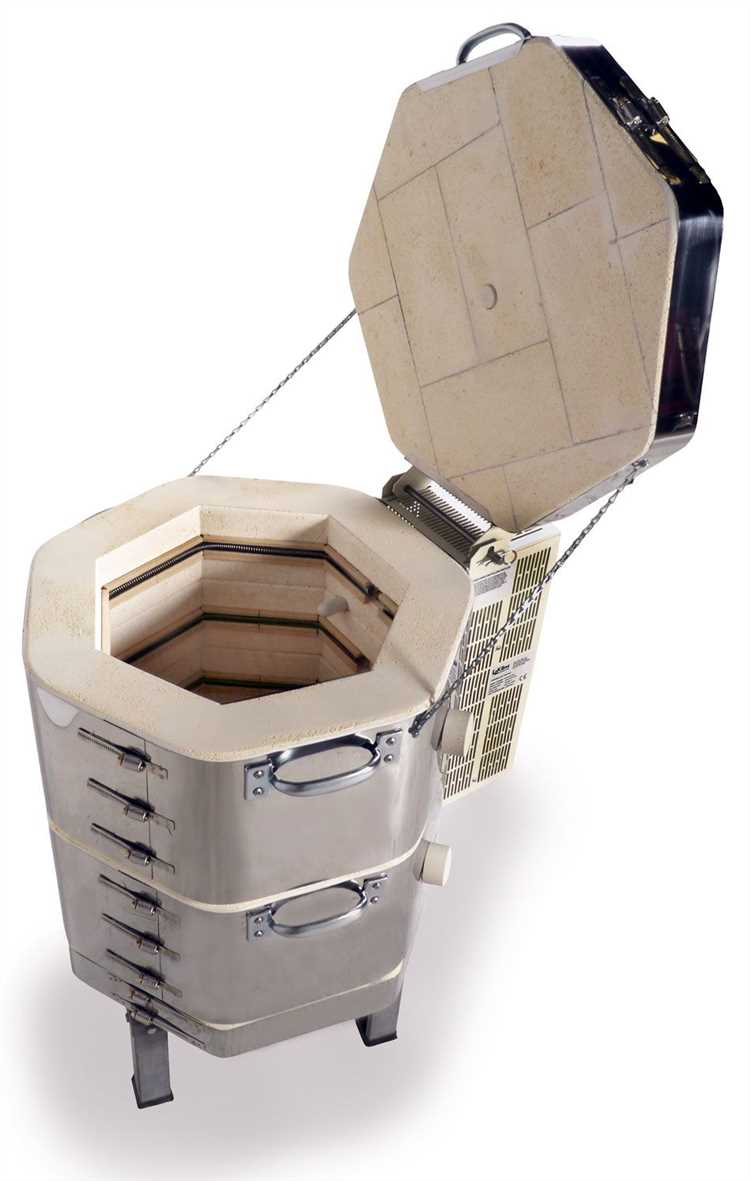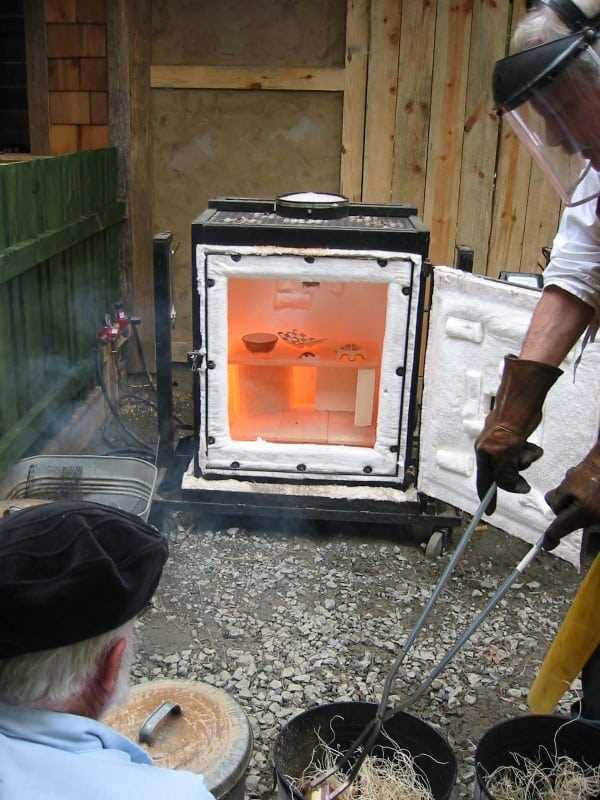Are you a pottery enthusiast looking to take your craft to the next level? One essential tool you’ll need to invest in is a pottery kiln. But how much does a kiln actually cost? The price range for pottery kilns can vary widely, depending on various factors such as size, type, and functionality.
Basic hobbyist kilns, suitable for beginners and smaller projects, can range from around $500 to $1,000. These kilns are typically electric and can handle small to medium-sized pieces. They often come with programmable controllers and basic safety features.
For those looking to create larger or more intricate pieces, professional-grade kilns are available at higher price points. These kilns can cost anywhere from $2,000 to $10,000. They offer advanced features such as multi-zone control for precise temperature regulation, larger capacities, and the ability to fire a wider range of materials.
It’s important to note that kiln prices do not include additional accessories and supplies, such as kiln shelves, posts, and kiln wash. These items are necessary for proper kiln operation and can add several hundred dollars to the overall cost.
Ultimately, the cost of a pottery kiln will depend on your specific needs and budget. It’s worth considering your long-term goals and the types of projects you envision yourself creating. Investing in a high-quality kiln that suits your needs can greatly enhance your pottery-making experience.
In addition to the initial cost, it’s also important to budget for ongoing maintenance and energy costs. Kilns consume a significant amount of electricity and require regular maintenance, such as cleaning and replacing parts, to ensure optimal performance and safety.
Whether you’re a hobbyist or a professional potter, investing in a pottery kiln is a crucial step in your artistic journey. By doing thorough research and considering your specific needs, you can find a kiln that fits your budget and helps you achieve your pottery goals.
What is a Pottery Kiln?
A pottery kiln is a specialized oven or furnace that is used to heat ceramics or pottery at a high temperature to make them hard and durable. The process of firing pottery in a kiln is called kiln firing or pottery firing.
By subjecting the pottery to extreme heat, the kiln transforms the clay and glazes into a solid, permanent form. The kiln’s high temperature enables chemical reactions to take place within the clay and glaze, causing them to bind together and create a finished piece of pottery.
When the pottery kiln reaches temperatures of around 2000°F (1100°C) or higher, the clay particles melt and fuse, resulting in a hardened ceramic material. This process is known as vitrification, which gives the pottery its strength and durability.
There are different types of pottery kilns available, including electric kilns, gas kilns, and wood-fired kilns. Each type has its advantages and disadvantages, and the choice depends on factors such as budget, space, and personal preferences.
Pottery kilns come in various sizes and designs, ranging from small tabletop kilns used by hobbyists to large industrial kilns used by professional ceramic artists and studios. Some kilns have built-in temperature control systems, while others require manual monitoring and adjustment.
Overall, a pottery kiln is an essential tool for ceramic artists and potters. It allows them to transform raw clay into beautiful and functional pottery through the process of firing. Without a kiln, the clay would remain soft and fragile, unable to withstand everyday use.
Factors Affecting the Cost of Pottery Kilns
When considering the cost of pottery kilns, several factors come into play. These factors can significantly influence the overall price of a kiln and determine which kiln option is the most suitable for your needs. Here are some key factors that affect the cost of pottery kilns:
- Type of Kiln: The type of kiln you choose will impact its cost. There are various types of pottery kilns available, such as electric kilns, gas kilns, and wood-fired kilns. Each type has its advantages and drawbacks, and their prices can vary widely.
- Kiln Size and Capacity: The size and capacity of a kiln can also affect its cost. Larger kilns with greater capacity are generally more expensive than smaller ones. The size of the kiln you need will depend on your production requirements and the size of the pieces you intend to fire.
- Features and Technology: Kilns with advanced features and technology, such as programmable electronic controllers, multiple heating zones, and energy-efficient designs, are generally pricier. These features can enhance the firing process and provide greater control over temperature and firing schedules.
- Build Quality and Materials: The build quality and materials used in the construction of a kiln can impact its cost. Kilns made with high-quality materials, such as high-grade refractory bricks and stainless steel, tend to be more expensive. These kilns are often more durable and can withstand high temperatures for extended periods.
- Brand and Manufacturer: The brand and manufacturer of a kiln can also affect its price. Well-established brands with a reputation for quality and reliability tend to have higher price points. However, they often offer better customer support, warranties, and spare parts availability.
- Accessories and Add-ons: Additional accessories and add-ons, such as kiln shelves, kiln furniture, kiln vents, and safety equipment, can increase the overall cost. These accessories are often necessary for proper kiln operation and safety.
It’s important to carefully consider these factors when selecting a pottery kiln. Investing in a high-quality kiln that meets your specific needs can enhance your pottery production and ensure reliable firing results in the long run.
Different Types of Pottery Kilns
There are several different types of pottery kilns available on the market. Each type has its own advantages and disadvantages, so it’s important to consider your specific needs and preferences when choosing the right kiln for your pottery practice. Here are some of the most common types of pottery kilns:
- Electric Kilns: Electric kilns are the most common type of kiln used by potters. They are easy to use and relatively inexpensive compared to other types of kilns. Electric kilns are powered by electricity and use heating elements to reach and maintain the desired temperature. They are perfect for small to medium-sized pottery projects.
- Gas Kilns: Gas kilns are another popular choice among potters. They use natural gas or propane as a fuel source and rely on burners to create heat. Gas kilns offer more control over the firing process and can reach higher temperatures compared to electric kilns. They are ideal for large-scale or professional pottery projects that require higher temperatures or specific reduction or oxidation atmospheres.
- Wood-fired Kilns: Wood-fired kilns are the oldest type of kilns used for pottery. They are fueled by wood and require constant monitoring and stoking of the fire. Wood-fired kilns create unique effects on pottery due to the interaction between the wood ash and the clay. They are popular among artists who value the natural and unpredictable aesthetics of wood firing.
- Raku Kilns: Raku kilns are designed specifically for the raku firing technique. They are typically small, portable, and quick to heat up. Raku firing involves removing pieces from the kiln at high temperatures and transferring them to a reduction chamber or combustible material to create unique surface effects. Raku kilns are perfect for artists who enjoy the unpredictable and spontaneous nature of raku firing.
| Type of Kiln | Advantages | Disadvantages |
|---|---|---|
| Electric Kilns | Easy to use, relatively inexpensive, perfect for small to medium-sized projects | Limited temperature range, longer firing times |
| Gas Kilns | More control over firing process, higher temperatures, suitable for large-scale projects | Expensive to install, higher operating costs |
| Wood-fired Kilns | Create unique effects, natural and unpredictable aesthetics | Requires constant monitoring, longer firing times |
| Raku Kilns | Quick to heat up, portable, ideal for raku firing technique | Not suitable for high-temperature firings, limited capacity |
When choosing a pottery kiln, it’s important to consider your budget, the size and type of projects you plan to make, and the firing techniques you intend to use. By understanding the different types of pottery kilns and their advantages and disadvantages, you can make an informed decision and find the kiln that best suits your needs.
Average Prices for Pottery Kilns
Pottery kilns can vary in price depending on their size, features, and brand. Here are the average prices for different types of pottery kilns:
- Electric Kilns: Electric kilns are the most common type of kilns used for pottery. On average, an electric kiln can cost anywhere from $500 to $3000.
- Gas Kilns: Gas kilns are more expensive than electric kilns because they require additional installation and hook-up costs. The average price for a gas kiln can range from $2000 to $8000.
- Wood-Fired Kilns: Wood-fired kilns are the most traditional type of kilns, often used for creating unique effects on pottery. These kilns are typically more expensive and can cost anywhere from $5000 to $20000.
In addition to the initial cost of the kiln, it’s important to consider other factors such as maintenance and energy consumption. Electric kilns tend to be more energy-efficient, while gas kilns and wood-fired kilns require additional fuel costs.
Keep in mind that these prices are just averages, and the actual cost may vary depending on factors such as the size, brand, and location of purchase. It’s always a good idea to research different options and compare prices before making a final decision.
In conclusion, pottery kilns can range in price from a few hundred dollars to several thousand dollars. The type of kiln you choose will depend on your specific needs and budget.
Additional Costs to Consider
In addition to the cost of the pottery kiln itself, there are several other expenses that you should take into account when purchasing a kiln for your pottery studio. These additional costs can vary depending on your specific needs and circumstances. Here are some factors you should consider:
-
Installation: You may need to hire a professional to install the kiln in your studio. This can include electrical wiring, ventilation system, and other necessary equipment. The cost of installation can vary depending on your location and the complexity of the installation process.
-
Operating Costs: Pottery kilns require electricity or other energy sources to operate. Consider the ongoing costs of electricity or gas when budgeting for your pottery kiln. Additionally, you may need to purchase kiln shelves, kiln wash, and other accessories that are necessary for firing pottery.
-
Maintenance and Repairs: Like any equipment, pottery kilns require regular maintenance to ensure they are in good working condition. This may include replacing elements, thermocouples, or relays. It’s important to factor in the cost of maintenance and repairs when budgeting for your pottery kiln.
-
Shipping: If you’re purchasing a pottery kiln online, shipping costs can be significant due to the weight and size of the kiln. Be sure to inquire about the shipping costs before making a purchase to avoid any surprises.
-
Additional Accessories: Depending on your specific needs, you may need to purchase additional accessories such as kiln furniture, kiln posts, or even a vent hood. These accessories can enhance the functionality of your pottery kiln but will come at an additional cost.
It’s important to consider these additional costs when budgeting for a pottery kiln. By factoring in these expenses, you can have a more accurate estimate of the total cost of owning and operating a kiln in your pottery studio.
Where to Buy Pottery Kilns
If you’re looking to buy a pottery kiln, there are several options available to you. Here are some popular places where you can purchase pottery kilns:
- Art supply stores: Many art supply stores carry pottery kilns, especially those focused on ceramics and pottery. These stores often have a variety of kilns to choose from, ranging from small tabletop models to larger professional kilns.
- Online retailers: There are numerous online retailers that specialize in selling pottery kilns. Websites like Amazon, eBay, and Etsy offer a wide selection of kilns at various price points. Make sure to read customer reviews and compare prices before making a purchase.
- Ceramics studios: Some ceramics studios sell kilns to customers. This can be a great option if you’re looking for a used kiln or want to see the kiln in person before buying. Check if there are any ceramics studios or pottery schools in your area that sell kilns.
- Pottery equipment suppliers: There are specialized suppliers that sell pottery equipment, including kilns. These suppliers often have a range of kilns available, and their staff can provide expert advice on choosing the right kiln for your needs.
- Local classifieds: Keep an eye on local classifieds, both online and in newspapers, for used pottery kilns. Many potters sell their kilns when they upgrade or retire, and you may be able to find a good deal in your area.
Remember to consider factors like size, temperature range, and features when choosing a pottery kiln. It’s also important to factor in any additional costs, such as installation, maintenance, and energy consumption, before making a final decision. Happy kiln shopping!
FAQ:
1. What is a pottery kiln and why is it important for pottery making?
A pottery kiln is a specialized oven or furnace used for firing pottery. It is an essential tool for pottery making as it allows the clay to harden and become durable. The kiln also plays a crucial role in the glazing process, where the pottery is given its final finish.
2. What are the different types of pottery kilns available in the market?
There are several types of pottery kilns available in the market, including electric kilns, gas kilns, wood kilns, and raku kilns. Each type has its own advantages and disadvantages, so it is important to choose the one that best fits your pottery making needs and budget.
3. How much does a pottery kiln typically cost?
The cost of a pottery kiln can vary widely depending on factors such as the size, type, and brand. On average, a small electric kiln can cost anywhere from $500 to $1,000, while a larger gas kiln can range from $2,000 to $5,000 or more. Keep in mind that additional accessories and equipment may also need to be purchased, which can further add to the overall cost.
4. Are there any additional costs associated with owning a pottery kiln?
Yes, there are additional costs associated with owning a pottery kiln. These can include the cost of electricity or fuel to power the kiln, the cost of kiln shelves and kiln furniture, and the cost of kiln maintenance and repairs. It is important to factor in these additional costs when determining the overall cost of owning a pottery kiln.


